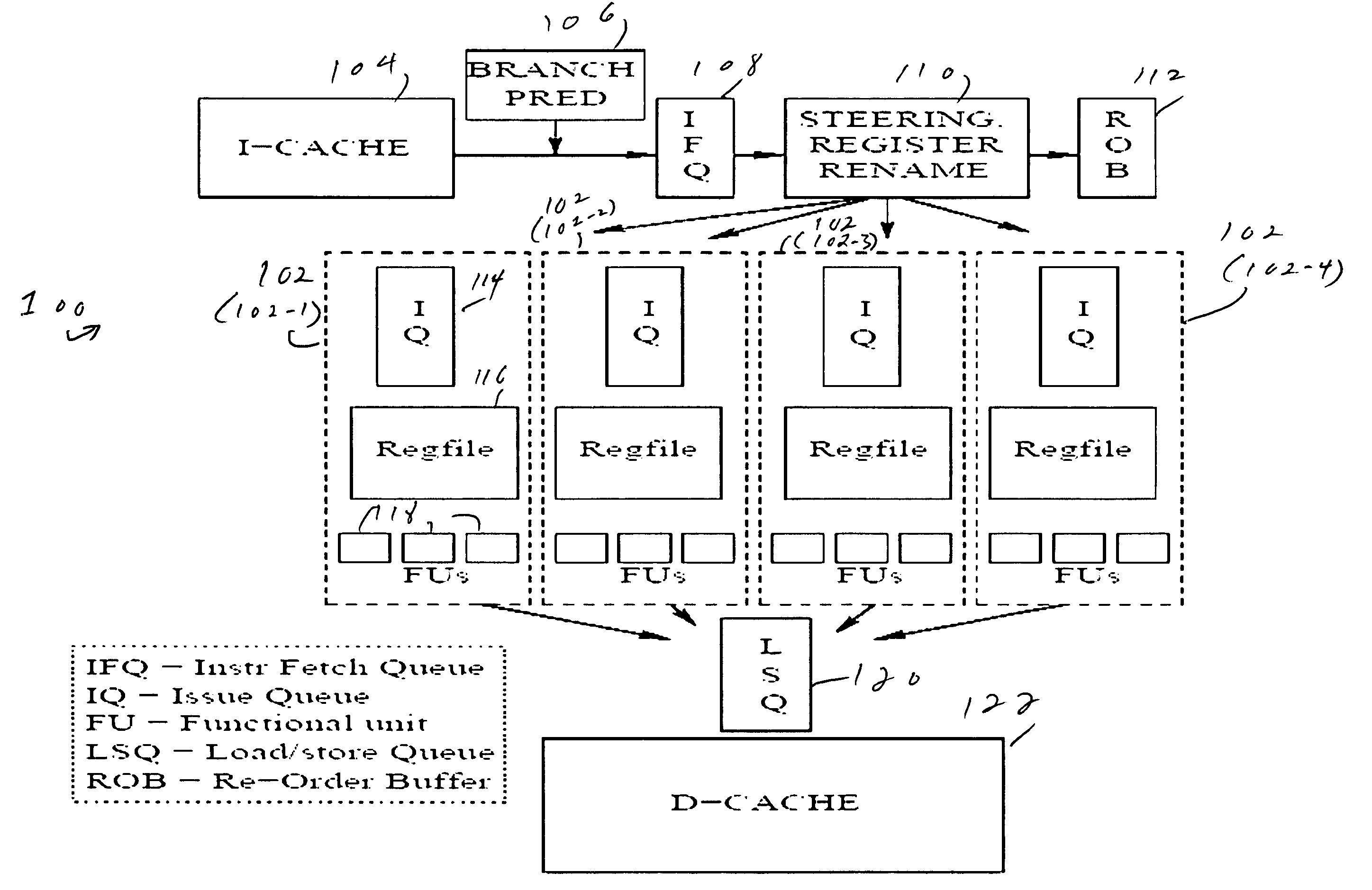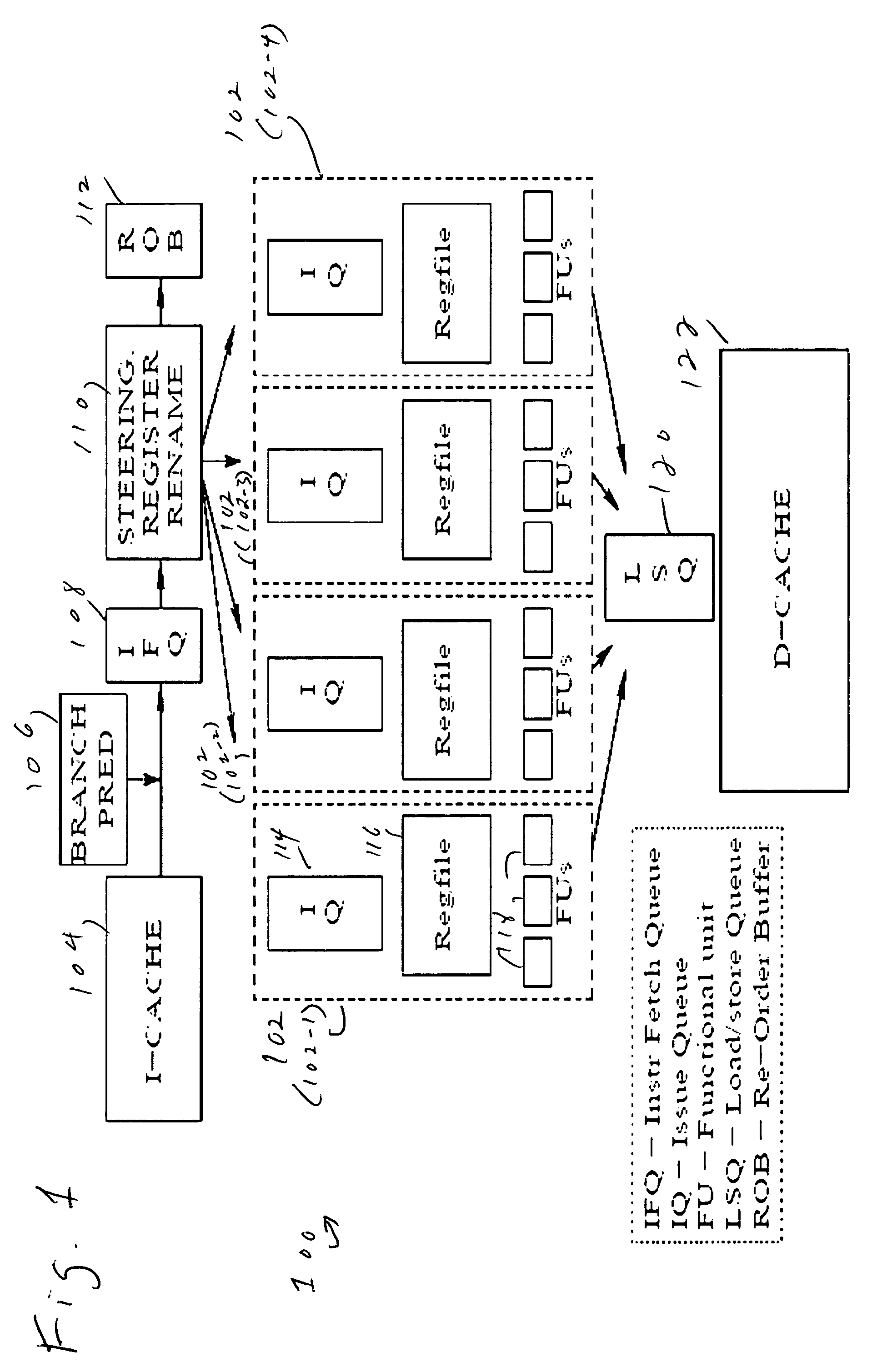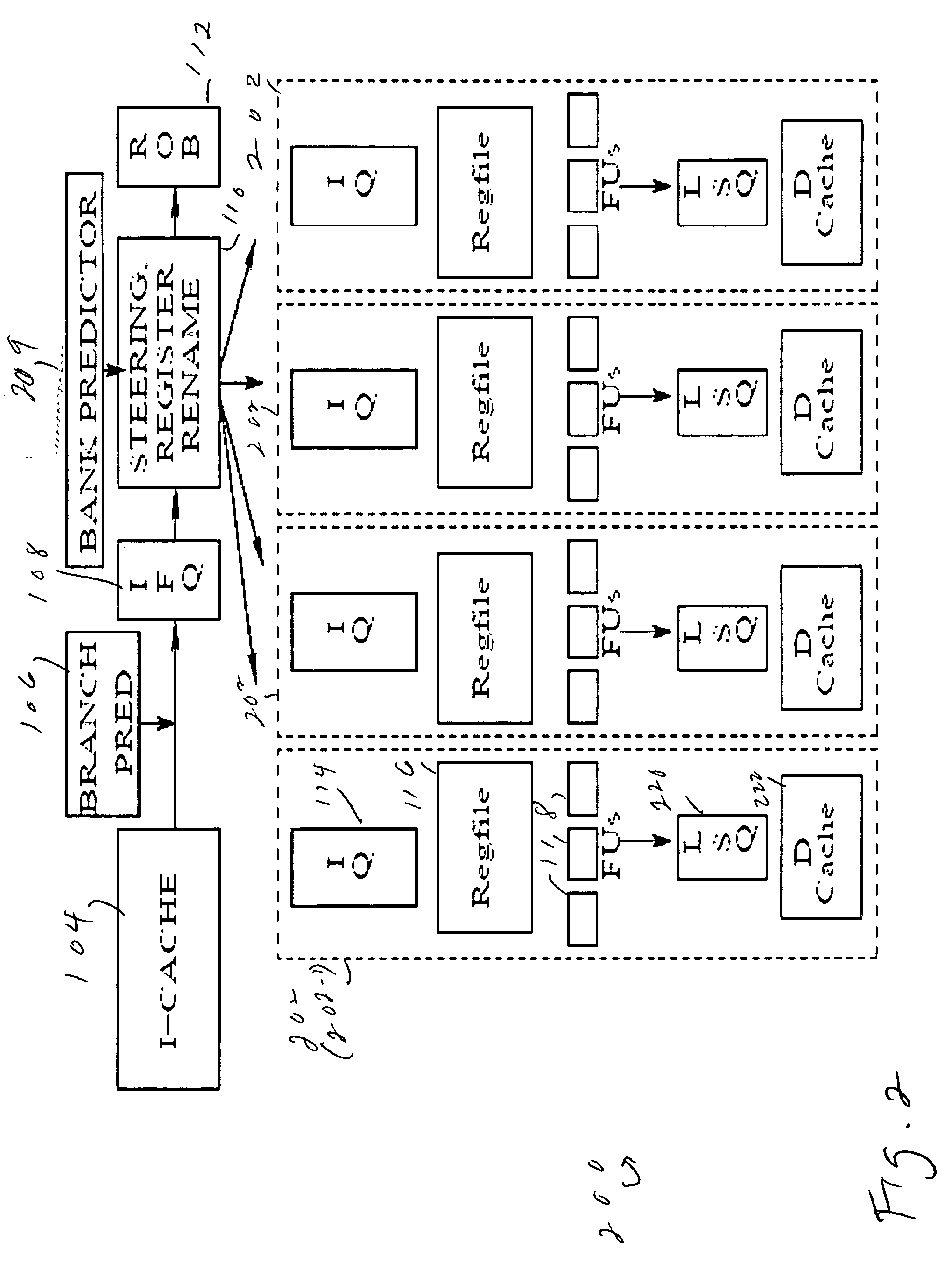Dynamically managing the communication-parallelism trade-off in clustered processors
a cluster processor and communication parallel technology, applied in the direction of program control, sustainable buildings, instruments, etc., can solve the problem that the algorithm misses fine-grained opportunities for reconfiguration, and achieve the effect of improving the processor's ability to support multiple threads, improving single-threaded performance, and saving leakage energy
- Summary
- Abstract
- Description
- Claims
- Application Information
AI Technical Summary
Benefits of technology
Problems solved by technology
Method used
Image
Examples
Embodiment Construction
[0031] A preferred embodiment of the present invention and variations thereon will be described in detail with reference to the drawings, in which like reference numerals refer to like elements throughout.
[0032] We start by describing a baseline clustered processor model that has been commonly used in earlier studies. Such a model is shown in FIG. 1 as 100, with four clusters 102 (individually designated 102-1, 102-2, 102-3, and 102-4). Upstream from the four clusters 102 are an instruction cache 104, a branch predictor 106, an instruction fetch cache 108, a steering register rename unit 110, and a reorder buffer 112. Within each cluster 102 are an issue queue 114, a register file 116, and functional units 118. Downstream from the clusters 102 are a load / store queue (LSQ) 120 and a data cache 122.
[0033] The branch predictor 106 and instruction cache 104 are centralized structures, just as in a conventional processor. At the time of register renaming in the steering register rename...
PUM
 Login to View More
Login to View More Abstract
Description
Claims
Application Information
 Login to View More
Login to View More - R&D
- Intellectual Property
- Life Sciences
- Materials
- Tech Scout
- Unparalleled Data Quality
- Higher Quality Content
- 60% Fewer Hallucinations
Browse by: Latest US Patents, China's latest patents, Technical Efficacy Thesaurus, Application Domain, Technology Topic, Popular Technical Reports.
© 2025 PatSnap. All rights reserved.Legal|Privacy policy|Modern Slavery Act Transparency Statement|Sitemap|About US| Contact US: help@patsnap.com



